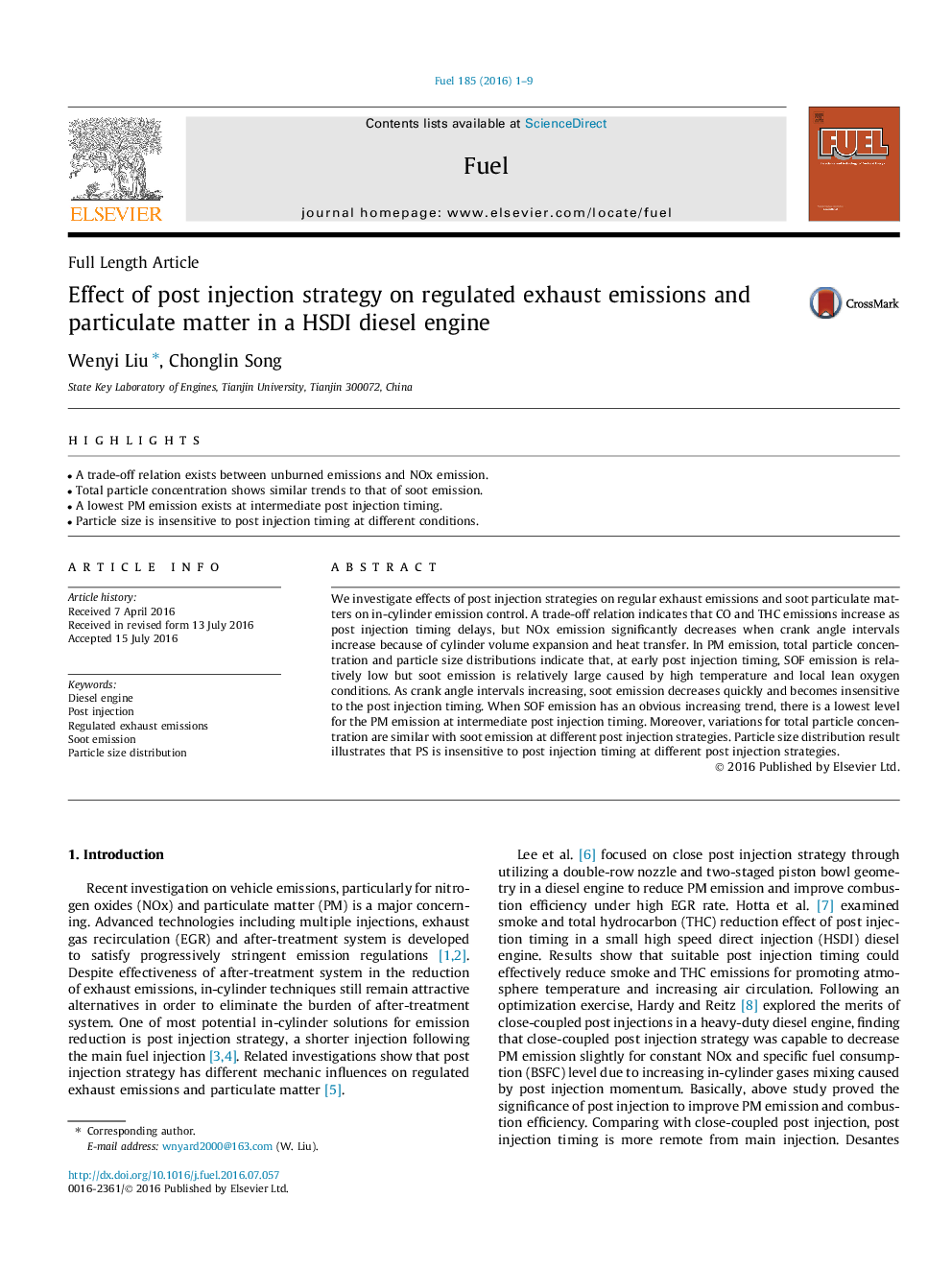| Article ID | Journal | Published Year | Pages | File Type |
|---|---|---|---|---|
| 204870 | Fuel | 2016 | 9 Pages |
•A trade-off relation exists between unburned emissions and NOx emission.•Total particle concentration shows similar trends to that of soot emission.•A lowest PM emission exists at intermediate post injection timing.•Particle size is insensitive to post injection timing at different conditions.
We investigate effects of post injection strategies on regular exhaust emissions and soot particulate matters on in-cylinder emission control. A trade-off relation indicates that CO and THC emissions increase as post injection timing delays, but NOx emission significantly decreases when crank angle intervals increase because of cylinder volume expansion and heat transfer. In PM emission, total particle concentration and particle size distributions indicate that, at early post injection timing, SOF emission is relatively low but soot emission is relatively large caused by high temperature and local lean oxygen conditions. As crank angle intervals increasing, soot emission decreases quickly and becomes insensitive to the post injection timing. When SOF emission has an obvious increasing trend, there is a lowest level for the PM emission at intermediate post injection timing. Moreover, variations for total particle concentration are similar with soot emission at different post injection strategies. Particle size distribution result illustrates that PS is insensitive to post injection timing at different post injection strategies.
